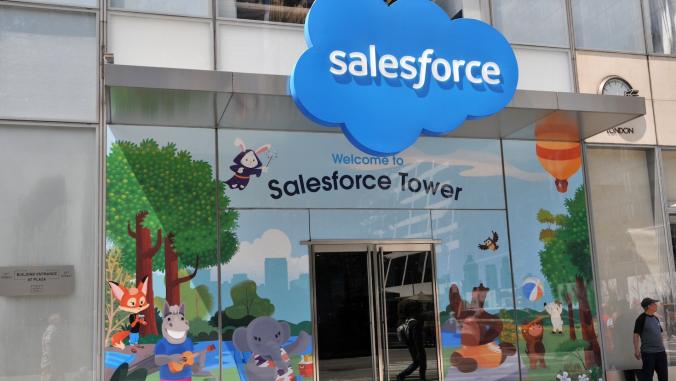5 things to remember when buying clean power
Market dynamics are evolving at lightning speed.

You know a topic really resonates when an hour-long, early-morning conference workshop dedicated to its exploration draws a standing-room-only audience. Doubly so when barely anyone leaves over the next hour, something I particularly appreciate when I’m playing discussion moderator.
The scintillating subject at hand? Best practices and ideas for sustainability professionals and energy managers interested in procuring clean power. The session on the final day of GreenBiz 17 featured points of view that corporate buyers should cultivate more closely as the conversation matures—from developer NextEra Energy Resources, the world's largest generator of energy from the wind (13,850 megawatts and counting) and the sun (2,110 MW), and Edison Electric Institute, an 80-something-year-old trade association that represents the interests of investor-owned utilities.
It’s difficult to take notes when you’re facilitating oodles of insightful questions, but thanks to digital recorders here are five of my takeaways, in no particular order:
1. Bone up on both solar and wind pricing trends
While there’s no easy formula for deciding which renewable resource makes the most sense to meet a given procurement aspiration, it is possible to make this high-level assumption: solar installations are usually more attractive when a company is looking at an arrangement that’s on site or on the same local electric grid as the facility being served or offset by the arrangement, while offsite wind farms will almost always offer the best option when it comes to the most cost-effective pricing over time.
“Local arrangements are the best, where possible, but the cheapest deals will be for wind,” said Steve Kiesner, director of national customer markets for Edison Electric Institute. “Find where the gaps are, where the grid system needs more resources.” And then proceed from there.
2. It’s not just additionality, it’s materiality
The concept of “additionality” – the idea that a clean energy contract should add electricity to gaps in the electric grid, ones that wouldn’t otherwise be filled – isn’t really new. Increasingly, however, they should consider the potential impact of the project on pricing and market conditions in the region where it will be sited. There's a shift toward better materiality metrics and more diligent risk assessments.
A good question to ask: is there a way that a corporate buyer can use its influence to inspire green tariffs that might help bring more clean power to a region where others might be interested in investing? Conversely, is the grid in question already accommodating as much intermittent wind or solar electricity as it can handle efficiently?
Distributed generation and energy storage resources will be key considerations in these evaluations, especially in places where there are high peak demand charges, according to RJ Johnson, executive director of business development for NextEra. “Corporate buyers are looking to do things in the right location,” he said.

3. Understand the risks
The good news is that clean energy is becoming more widely available. The bad news is that clean energy is becoming more widely available.
As more renewables come online, the potential for prices to collapse is very real – especially if the associated grid and transmission system hasn’t been updated to handle it. One oft-cited example comes from Texas, where the massive buildout in wind power capacity at one point required the state regulator to curtail electricity generated by those resources. This, in turn, resulted in steep price cuts that made it difficult for the project “owners” to recoup their investment
NextEra’s Johnson encouraged corporate buyers to ask tough questions about their contract terms and to look careful about who's on the hook if something goes awry. “Follow the money, ask who’s holding the risk,” he noted. “Make sure you understand the financials early on. You’re going to have a long relationship. You’re not dating, you’re getting married.”
Several years ago, utilities would be in the ‘just say no’ phase. Now, there’s not one who doesn’t understand that they need to accommodate what customers want.
4. Spend more time understanding how utilities work
Corporate energy procurement and sustainability professionals haven’t been shy about criticizing how difficult it is to negotiate procurement relationships with utilities — it’s one of the big reasons that the Renewable Energy Buyers Alliance was created last year, to provide a collective forum for developing and sharing best practices.
But buyers would do well to spend more time understanding what both regulated and investor-owned utilities are up against, notes Edison Electric Institute’s Kiesner.
Priority one: rates must be affordable, reliable, and fair for all, not just for one sort of customer. “It’s important to understand what’s happening on the utility side of the fence,” he said. “What their requirements are, what the focus of the business strategy is. Find the synergies.”
That said, Johnson noted: “Right now, the corporate buyer has all the power. You should use that power appropriately. Which is to say, if you’re an industrial and you’re actually bringing new load, you get to do a lot of things that other folks don’t. Specifically, you can go to a muni or a coop, and they will do economic development to bring you in.”
5. You should find utilities more willing to listen
If your company has been frustrated by past clean power discussions with its primary utilities, someone with energy procurement responsibility might want to knock on the door again. What a utility might have believed – or said – just six months ago is likely to be completely different now, according to the GreenBiz panelists.
“Several years ago, they would be in the ‘just say no’ phase. Now, there’s not one who doesn’t understand that they need to accommodate what the customer wants,” Kiesner noted. “Now the mindset is whatever the customer wants, we’re going to find a way. Easier said than done, but that’s the mindset.”





